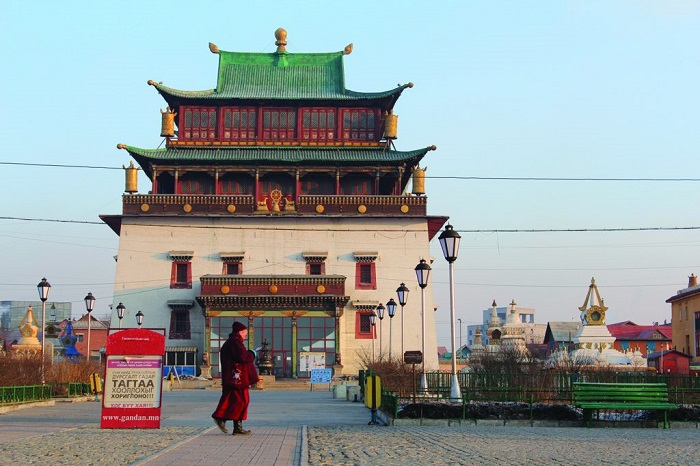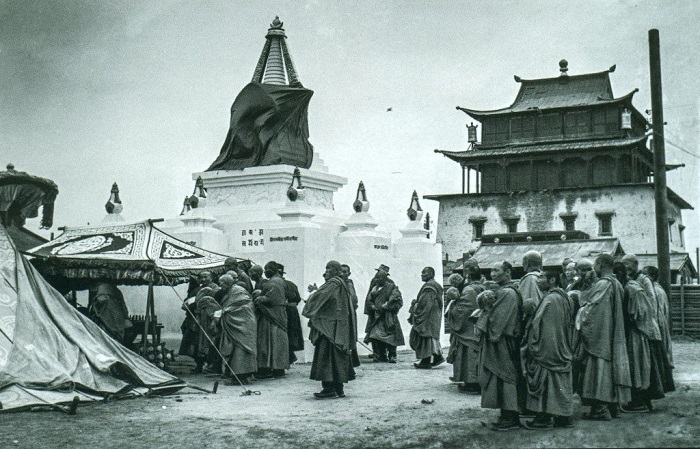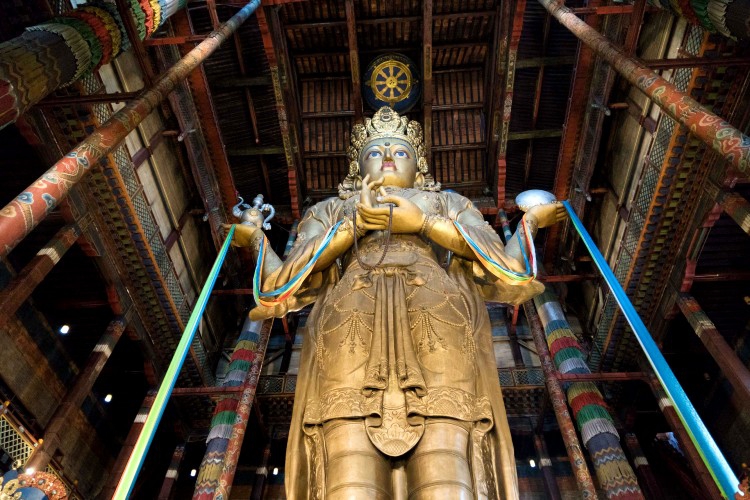Posted by Selena Travel / 07 27, 2024
A little bit past the central square of Ulaanbaatar is one of the oldest buildings in this young city. Surrounded by white walls, a painted gate once protected the inhabitants inside. There are several buildings inside the walls, but the most eye-catching is a large white building, crowned with a beautiful deep green curved roof. There are a number of cobblestone paths that lead to Gandan Monastery – “The Great Place of Complete Joy” as the name translates from Tibetan.

Monasteries are one of the reasons why the nomadic Mongolians started to settle down in the first place. Monks would find it too cumbersome to move around and eventually settled in one area. Most Mongolian cities are founded as centers of Buddhist thought.

The first temple called Gandan was founded in 1835 by the highest ranked reincarnated lama (or priest) in Mongolia. The Mongolian lama was very highly ranked, third in line from the Dalai Lama. Soon after the large temple was finished, other buildings were added to the grounds. Monks built temples devoted to daily prayer and places to study Buddhist philosophy, astrology, and medicine. By the time the 20th century rolled around, Gandan monastery was the Mongolian center of Buddhist intellectual life. At this time there were nearly 17,000 monks living in Ulaanbaatar. Imagine all of the robed devotees walking around the city, attending to daily life, and administering the city.
At this point in time, the lama Bogd Khan was both the religious and political leader of Mongolia. He was third in line after only the Dalai Lama and the Panchen Lama. There are stories of him living a life of excess, but he had a hard time juggling the interests of the Manchu dynasty who ruled China and the Russians who were expanding eastward and maintaining control of the Mongolian nobles that administered their own lands.
During the 1930s, the Communist government started to ban religious ceremonies, after a few liberal years where they allowed religious worship. The monastery closed in 1938 in the middle of a policy of disrobing, imprisoning and executing monks. After six years of staying closed, in 1944 the monastery re-opened to serve as the only functioning monastery during the Communist period. In what may be an apocryphal story, then US Vice President Henry Wallace asked the leader of Mongolia, Choibalsan, to see a monastery. Choibalsan ordered that the monastery quickly be opened, and it remained open to be a show monastery for visitors. They severely limited the religious ceremonies allowed on the grounds though, and few monks were allowed to stay in residence. However, despite these limits, the monastery remained an important place for Buddhists. Many other monasteries were destroyed after the monks were forced to move away or killed.
After the transition to democracy in 1990, the monastery re-opened and again became the center of Mongolian Buddhism. Monks began to rebuild and commission new statues to aid in their worship.
Today the monastery in the largest in the country, housing over 150 monks all year long. Inside the main building is a 25-meter-tall statue of the Avalokitesvara covered in numerous precious stones and draped in fabric. The monastery hosts workshops for monks, and tsam dances, a key part of Tibetan Buddhism. They have even begun offering e-books about Buddhism online for people all over the world to learn more.

There is a small fee to enter, and another to take photographs. There are usually ceremonies at 9 am, though they may have occasional ones later in the day.